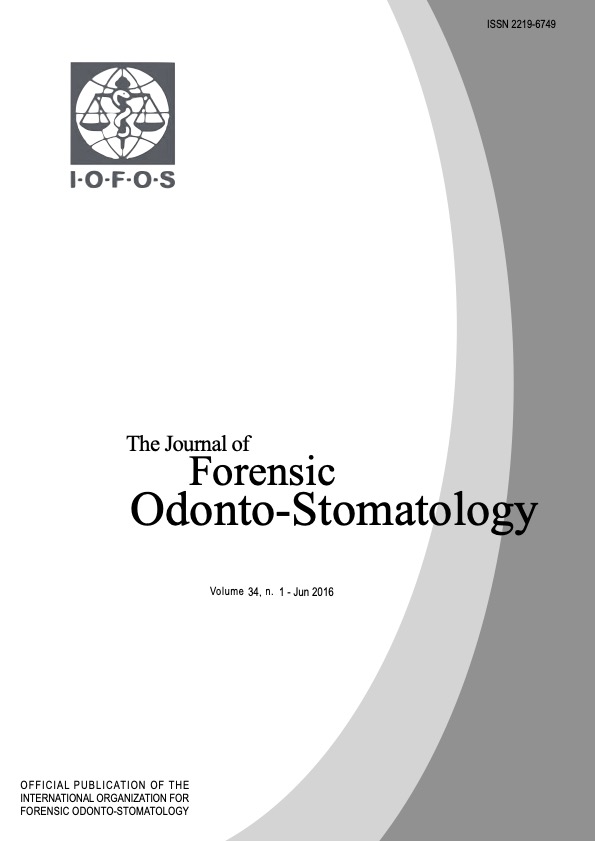Discrimination Potential of Root Canal Treated Tooth in Forensic Dentistry
Keywords:
Root canal treatment, Identification, Forensic dentistryAbstract
Forensic Odontology is a vital component of forensic science and one branch involves the application of dental science to the identification of unknown human remains. The aim of this study is to investigate the discriminatory potential for identification of the radiographic morphology of obturated single root canals. Thirty periapical radiographs of patients having endodontic treatment of single rooted canals were selected randomly from the data bank of the digital X- ray system present in the restorative department, University of Science and Technology, Sudan. The post-operative radiographs were considered as an ant-mortem data “Set 1”. Ten radiographs from the thirty were reprinted, labelled from (A-J) and considered as a post-mortem data “Set 2”. This post-mortem group of 10 radiographs “Set 2” would be compared with the ante-mortem group of 30 radiographs comprising “Set 1”. These two sets of radiographs would be examined by 40 dentally trained personnel. The thirty radiographs comprising “Set 1” and the 10 radiographs comprising “Set 2” were provided to
each of the examiners who were asked to match the individual post-mortem radiographs (“Set 2”) with the ante-mortem radiographs (“Set1”). The result demonstrated that 34 examiners achieved a success rate of 100%, 4 examiners achieved a success rate of 97.5% (1 mismatch) and 2 examiners achieved a success rate of 95% (2 mismatches). The radiographic images of obturated single-rooted teeth in this study were shown to have highly- specific morphological features. It is proposed that, in cases where the ante and post-mortem radiographs of a single-rooted obturated canal show similar morphology, this commonality of morphology can be used as a tool in the identification process.

